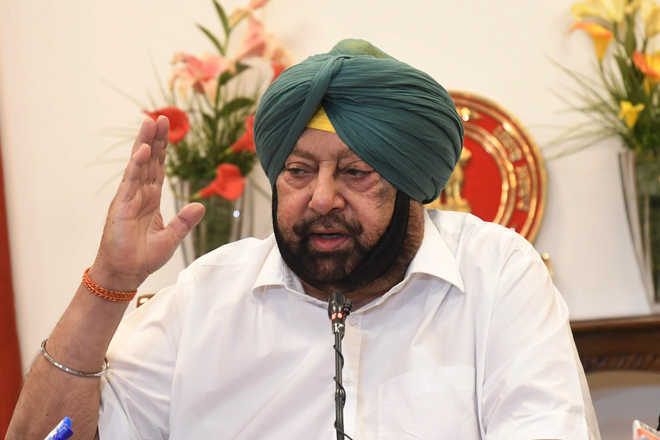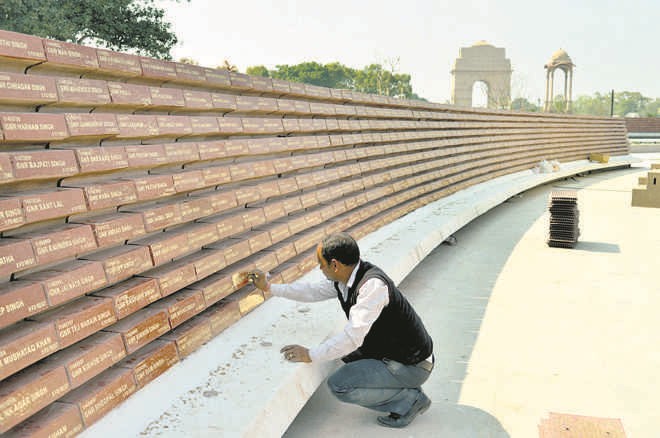The good news is that cross-border terrorism is at an all-time low — not a single big-bang attack since Pulwama and none outside J&K for a decade. This decline in jihadist activity is a good reason to offer Islamabad the olive branch. In 2015, a new twin track framework for dialogue was instituted at the level of National Security Adviser and Foreign Secretary. The NSAs met once in Bangkok, but there was no follow-through after the Uri terrorist attack.

DEEP FREEZE: India-Pakistan ties have remained strained for eight years now. PTI
One New Year resolution the Modi government did not make, one can be sure, is normalising relations with Pakistan — now disrupted for eight years — with whom India has fought four wars and is combating cross-border terrorism (CBT) emanating from that country. Neither the use of force nor diplomacy has resulted in dispute resolution. Gains of war were either frittered away or diplomacy was not sustained enough to produce a durable and interruption-proof framework for dialogue.
While previous governments took big risks in mending fences, public opinion and reputational damage of a muscular government have robbed the engagement process of continuity. The Modi government has prematurely exhausted its patience to abandon strategic restraint for a kinetic response. The Uri and Balakot military strikes not only slammed the doors on dialogue but also put SAARC in cold storage.
India’s reorganisation of J&K has exacerbated friction and frustration in Islamabad. With China claiming damages for the restructuring of Ladakh, India has willy-nilly created a two-front confrontation. Bilateral dialogue that was stopped by the UPA regime following the beheading of an Indian soldier in January 2013 is in its longest pause. Just as India is engaged in a military and diplomatic dialogue with China to resolve the border dispute despite periodic coercion, reviving engagement with Pakistan is essential to defusing one front.
India’s record of resolving the oldest border disputes and longest insurgencies is not very flattering. Dispute resolution is not India’s forte. Diplomatic missions in New Delhi and Islamabad stand downgraded; trade at the Attari-Wagah border and cross-LoC barter have stopped; bus, rail and air connectivity are suspended. Government-to-government business and people-to-people engagement are severely curtailed. Even Track II interactions, most vital when official channels are blocked, are suspended.
The good news is that CBT is at an all-time low — not a single big-bang attack since Pulwama (2019) and none outside J&K for a decade. This decline in jihadist activity is a good reason to offer Islamabad the olive branch. In 2015, a new twin track framework for dialogue, redesignated as Comprehensive Bilateral Dialogue (CBD), was instituted at the level of the National Security Adviser and the Foreign Secretary. The NSAs met once in Bangkok, but there was no follow-through after the Uri terrorist attack and its high-visibility response. The CBD was given an indecent burial with the epitaph: “Terror and talks can’t go together.”
In 1997, the Composite Dialogue was institutionalised with peace, security, J&K and other subjects — Siachen, Sir Creek, Wullar Barrage, terrorism, economic cooperation and promotion of friendly exchanges. Siachen and Sir Creek subjects were ready for signing not once, but twice.
Dialogue was interrupted by the Kargil war and the attack on Parliament, but it took off in earnest again in 2004 after Prime Minister Vajpayee visited Pakistan. Between 2004 and the 2008 Mumbai terror attacks, four rounds of dialogue had taken place and the fifth round in Islamabad got aborted due to the Mumbai attacks. Talks were revived as Resumed Dialogue in 2011 and, altogether, three rounds were held till the beheading of an Indian soldier.
Whereas Vajpayee and Manmohan Singh faced bigger challenges than Modi and took risks to return to the negotiating table, Modi has made relatively little or no investment in dialogue. Gifted with strategic patience, Vajpayee was determined not to give up trying even after a botched trip to Lahore, the skirmish at Kargil, the foul-up at Agra and the attack on Parliament which sparked Operation Parakram. There were gains from Parakram: a ceasefire agreement, reduction in infiltration by 53 per cent, wire-fencing of LoC and ground work for back-channel talks that led to the four-point Musharraf formula that eluded consummation.
Manmohan Singh, in his two terms, enjoyed the fruits of continued engagement, both at upfront and back channels. His first term was marred by the Mumbai attacks which went unresponded in the guise of strategic restraint. According to former NSA MK Narayanan, India did not possess the capabilities for an effective military response. Manmohan Singh resumed talks, but was forced to call them off after the soldier’s beheading. The dialogue has remained interrupted since then and though Modi did make tentative efforts to revive it, not a single session of structured dialogue has been held till date. SAARC has become hostage to the suspension of India-Pakistan dialogue.
During the Modi government’s tenure, India has not faced terror attacks outside J&K (barring one in Gurdaspur). Major attacks were in Pathankot, Uri and Pulwama. But nowhere near the provocations and attacks faced by his predecessors. Uri and Pulwama were replied with spectacular ground and air strikes and their benefits reaped wholesomely during the elections. New red lines were imposed on talks: no consultation with the Hurriyat by Pakistani emissaries; and terror and talks would not go together, virtually ruling out dialogue. Previous governments would also rhetorically stipulate this embargo, but would relent in the larger interests of keeping the channels of communications open.
Following the PLA’s aggression, the Indian Army is enhancing its force deployment against China in Ladakh by redeploying troops from the Pakistan front. This welcome step recognises China, not Pakistan, as the main threat and has the potential to dilute the two-front challenge. A recent study by the Institute for Defence Studies and Analyses (IDSA) reveals that the Indian Army is overstretched along two live borders, overstressing troops. Further, Pakistan’s grand overture on opening the Kartarpur corridor has gone unresponded.
In his memoirs, former President Pranab Mukherjee, with whom Modi enjoyed an excellent rapport, writes: “India needs to tackle Pakistan through deft handling, rather than romanticising its political approach.” He adds: “The country gained little by over-talking surgical strikes in 2016.”
This is repudiation of Modi’s preferred policy of a kinetic response to resuming the dialogue process. At the very least, start talking while retaining the option of a kinetic response. The revival of formal talks with Pakistan will reduce stress on soldiers, dilute one front and save SAARC from extinction.
























































































































